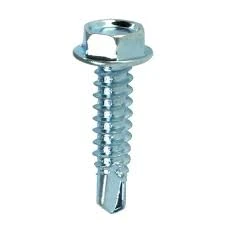M5 Hex Head Bolts for Secure Fastening in Various Applications
Understanding M5 Hex Head Bolts A Comprehensive Guide
When it comes to fastening solutions in various engineering and construction applications, the M5 hex head bolt is a popular choice among professionals and enthusiasts alike. Known for its reliability and versatility, the M5 hex head bolt has established itself as a staple component in numerous projects, ranging from automotive manufacturing to furniture assembly.
What is an M5 Hex Head Bolt?
The designation M5 refers to the nominal diameter of the bolt, which is 5 millimeters. The “hex head” indicates the shape of the bolt’s head, which has six flat sides that allow for easy tightening and loosening with a wrench or socket. This design not only provides a firm grip but also distributes the load evenly, reducing the chances of damage to the workpiece and ensuring a secure fit.
Specifications and Materials
M5 hex head bolts come in various lengths and materials, each suited for specific applications. Common materials include
1. Carbon Steel Known for its strength, carbon steel bolts are often treated for corrosion resistance, making them suitable for outdoor use. 2. Stainless Steel Renowned for its excellent resistance to corrosion and rust, stainless steel M5 bolts are ideal for marine applications or environments where moisture is prevalent. 3. Alloy Steel In applications requiring higher tensile strength, alloy steel bolts can be utilized, as they provide increased durability and performance.
The surface treatment of hex head bolts is also crucial. Common finishes include zinc plating, which enhances corrosion resistance, and black oxide, which gives a sleek, aesthetic appearance while offering minimal corrosion protection.
Dimensions and Standards
m5 hex head bolt

M5 bolts typically conform to the ISO metric standards, which define not just the diameter but also the thread pitch, length, and head design. The standard thread pitch for an M5 bolt is usually 0.8 mm. Understanding these measurements is essential when selecting the appropriate bolt for your project, as it ensures compatibility with the materials and other components.
Applications of M5 Hex Head Bolts
The versatility of M5 hex head bolts makes them suitable for a wide range of applications, including
- Automotive Industry Used in various vehicle components, including engine assemblies, chassis, and body parts. - Electronics M5 bolts secure various electronic housings and devices, where precise fastening is crucial. - Furniture Assembly Often used in the assembly of flat-pack furniture, M5 bolts provide a sturdy connection between components. - Construction and Engineering Utilizing M5 bolts in structural applications offers reliability and strength to build frameworks and installing fixtures.
Installation Tips
When installing M5 hex head bolts, there are a few best practices to consider
1. Tightening Use the appropriate torque specifications to ensure that the bolts are not over-tightened or left loose. Over-tightening can lead to bolt failure, while loose bolts can result in structural insecurity. 2. Washers Incorporating washers helps distribute the load and minimizes surface wear, which can enhance the longevity of both the bolt and the material it's fastening. 3. Pre-drilling For materials like wood or when working with hard surfaces, pre-drilling can help prevent splitting or damage when inserting the bolt.
Conclusion
In summary, M5 hex head bolts are an essential component in a diverse array of applications, offering strength, reliability, and versatility. Understanding their specifications, materials, and best practices for installation will help in selecting the right bolt for any project. Whether you are a professional in the industry or a DIY enthusiast, mastering the use of M5 hex head bolts can enhance the quality and durability of your work.
-
Weatherproof Plastic Expansion Anchors for OutdoorNewsJun.06,2025
-
Sustainability in the Supply Chain: Eco-Friendly TEK Screws ProductionNewsJun.06,2025
-
Load-Bearing Capacity of External Insulation FixingsNewsJun.06,2025
-
Double Head Bolts: Enhancing Efficiency in Industrial MachineryNewsJun.06,2025
-
Corrosion Resistance in Chipboard Screws: Coatings for Wholesale DurabilityNewsJun.06,2025
-
Butterfly Toggle Bolts : Enhancing Structural ResilienceNewsJun.06,2025
